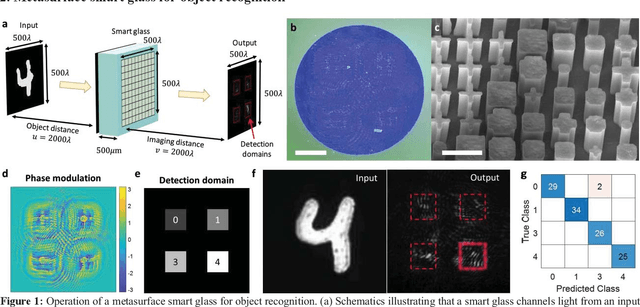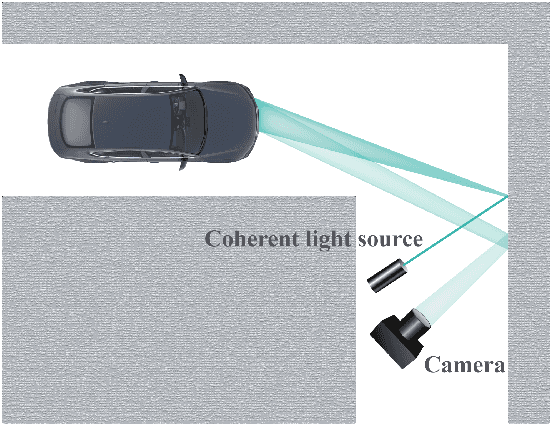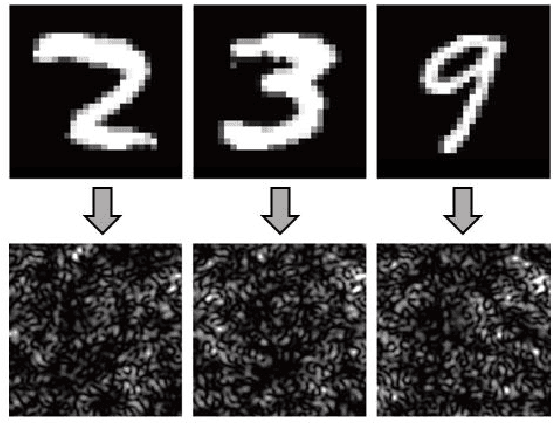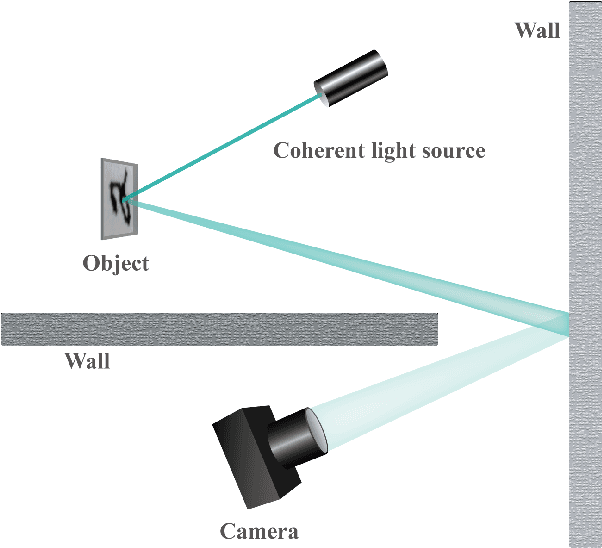Zongfu Yu
Compute-first optical detection for noise-resilient visual perception
Mar 14, 2024



Abstract:In the context of visual perception, the optical signal from a scene is transferred into the electronic domain by detectors in the form of image data, which are then processed for the extraction of visual information. In noisy and weak-signal environments such as thermal imaging for night vision applications, however, the performance of neural computing tasks faces a significant bottleneck due to the inherent degradation of data quality upon noisy detection. Here, we propose a concept of optical signal processing before detection to address this issue. We demonstrate that spatially redistributing optical signals through a properly designed linear transformer can enhance the detection noise resilience of visual perception tasks, as benchmarked with the MNIST classification. Our idea is supported by a quantitative analysis detailing the relationship between signal concentration and noise robustness, as well as its practical implementation in an incoherent imaging system. This compute-first detection scheme can pave the way for advancing infrared machine vision technologies widely used for industrial and defense applications.
Metasurface Smart Glass for Object Recognition
Oct 15, 2022

Abstract:Recent years have seen a considerable surge of research on developing heuristic approaches to realize analog computing using physical waves. Among these, neuromorphic computing using light waves is envisioned to feature performance metrics such as computational speed and energy efficiency exceeding those of conventional digital techniques by many orders of magnitude. Yet, neuromorphic computing based on photonics remains a challenge due to the difficulty of training and manufacturing sophisticated photonic structures to support neural networks with adequate expressive power. Here, we realize a diffractive optical neural network (ONN) based on metasurfaces that can recognize objects by directly processing light waves scattered from the objects. Metasurfaces composed of a two-dimensional array of millions of meta-units can realize precise control of optical wavefront with subwavelength resolution; thus, when used as constitutive layers of an ONN, they can provide exceptionally high expressive power. We experimentally demonstrate ONNs based on single-layered metasurfaces that modulate the phase and polarization over optical wavefront for recognizing optically coherent binary objects, including hand-written digits and English alphabetic letters. We further demonstrate, in simulation, ONNs based on metasurface doublets for human facial verification. The advantageous traits of metasurface-based ONNs, including ultra-compact form factors, zero power consumption, ultra-fast and parallel data processing capabilities, and physics-guaranteed data security, make them suitable as "edge" perception devices that can transform the future of image collection and analysis.
Direct Object Recognition Without Line-of-Sight Using Optical Coherence
Mar 18, 2019



Abstract:Visual object recognition under situations in which the direct line-of-sight is blocked, such as when it is occluded around the corner, is of practical importance in a wide range of applications. With coherent illumination, the light scattered from diffusive walls forms speckle patterns that contain information of the hidden object. It is possible to realize non-line-of-sight (NLOS) recognition with these speckle patterns. We introduce a novel approach based on speckle pattern recognition with deep neural network, which is simpler and more robust than other NLOS recognition methods. Simulations and experiments are performed to verify the feasibility and performance of this approach.
 Add to Chrome
Add to Chrome Add to Firefox
Add to Firefox Add to Edge
Add to Edge